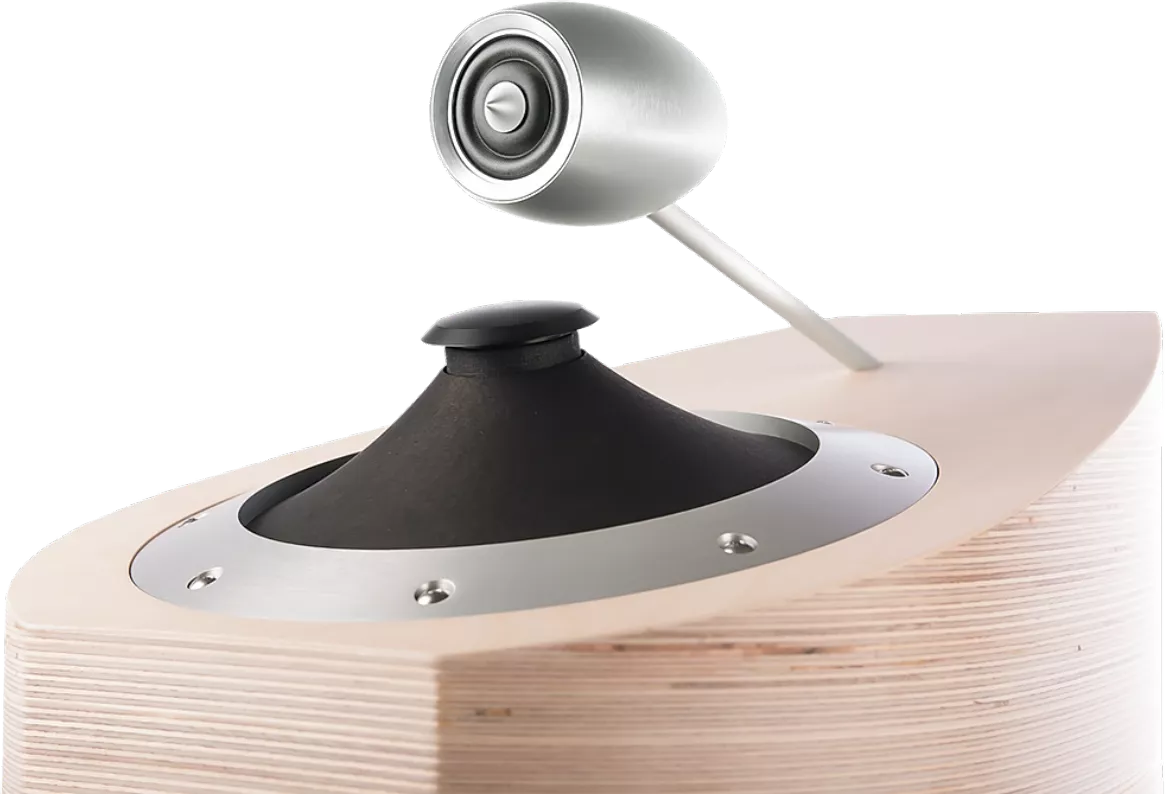Why is the driver placed on top of the speaker at Ilumnia?

Ilumnia's challenge was to eliminate all the flaws of dynamic loudspeakers. The floating cone has removed most of the errors such as distortion, compression, non-linear behavior, inertia and resonance. This left the so-called Doppler effect, which affects 2-way dynamic loudspeakers. This effect can best be explained as a distortion in the sound that occurs when a high and a low tone are reproduced at the same time by the same driver (the mid-low driver). The pitch of the high then increases the further the cone moves as a result of the low tone and vice versa. It is similar to the sound of a train passing by. However, that change in pitch is only audible if you hear it in the direction of the moving object (the cone hanging directly in front of you or the train "going straight at you". If the cone is radiating in a different direction (e.g. upwards ), then this effect is not noticeable (just like if you are 500 meters away from the railway). The Ilumnia LEMS driver is placed on the Magister at an angle of 9 degrees on top of the cabinet (with Vocalis 13 degrees) to minimize this Doppler effect.